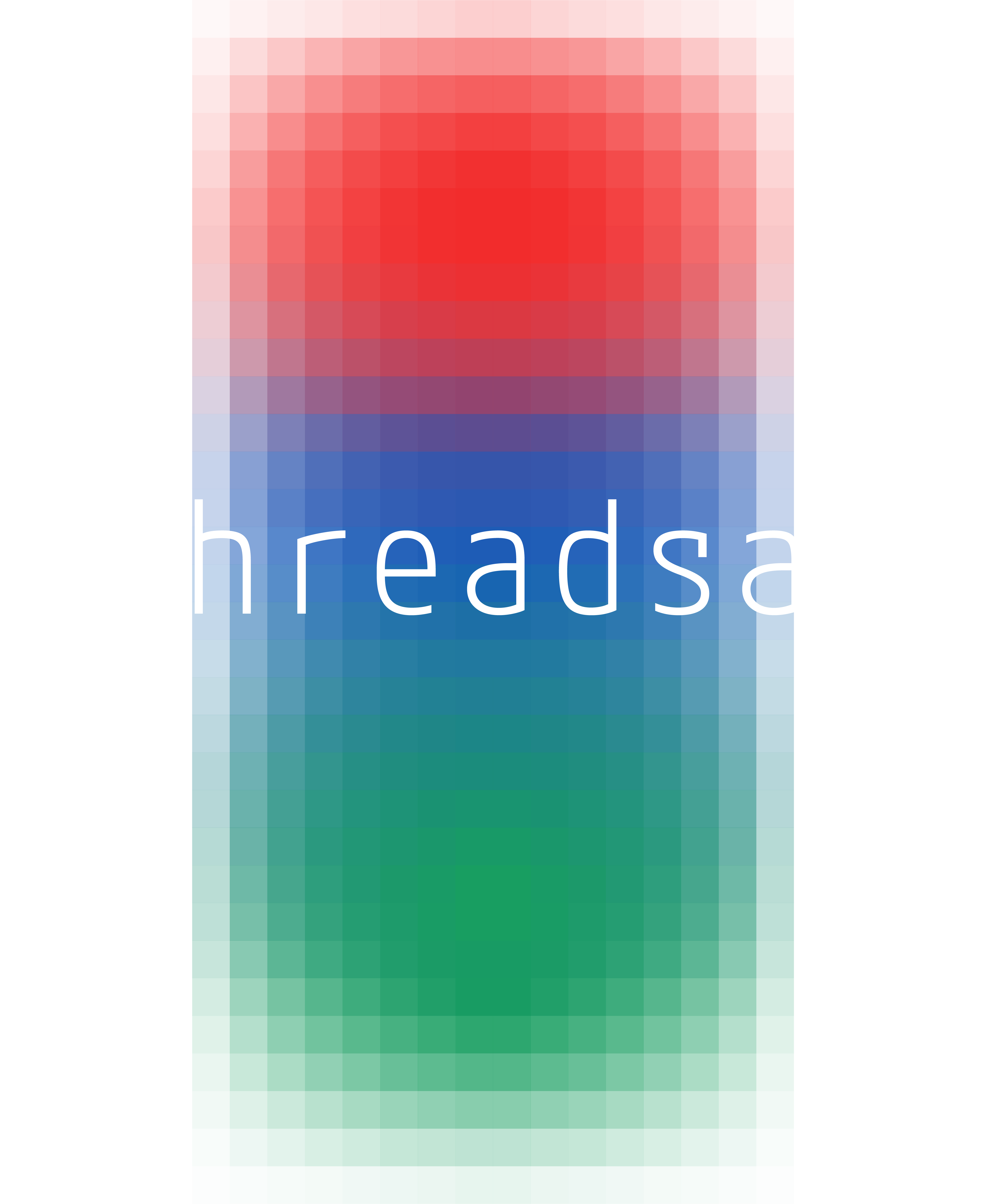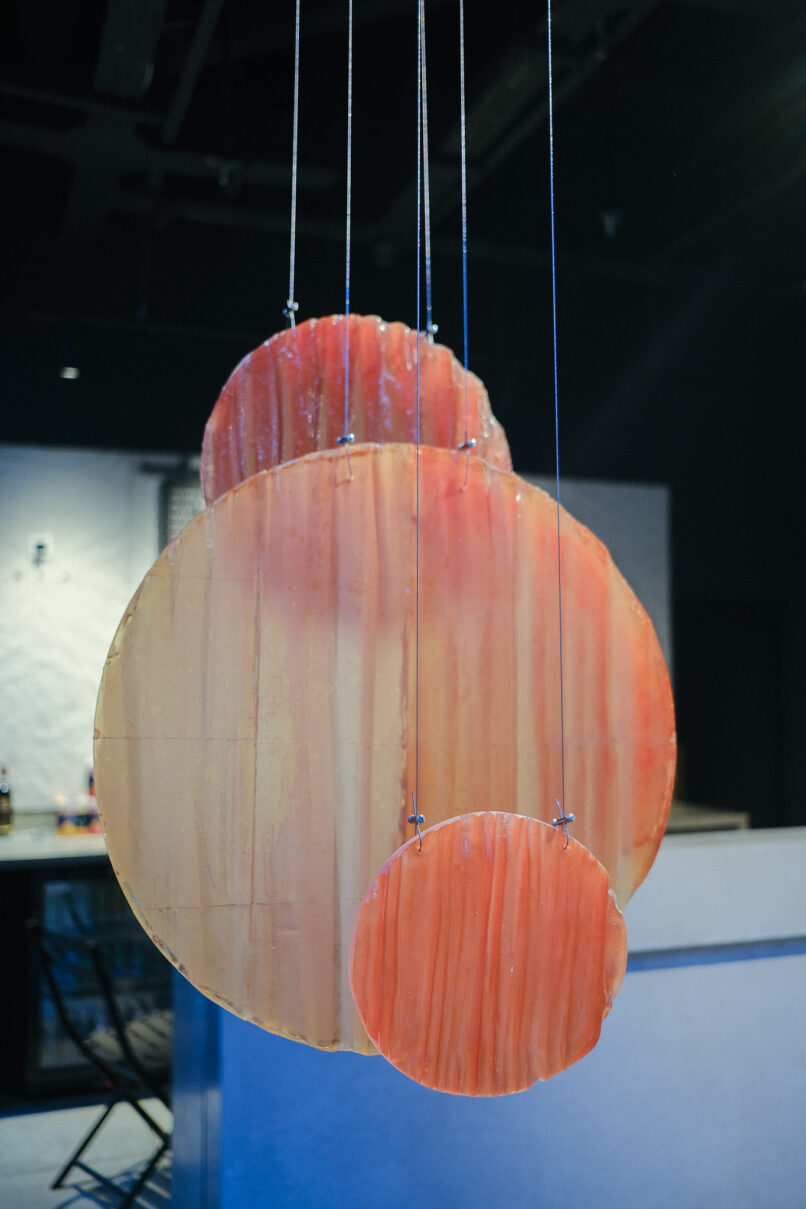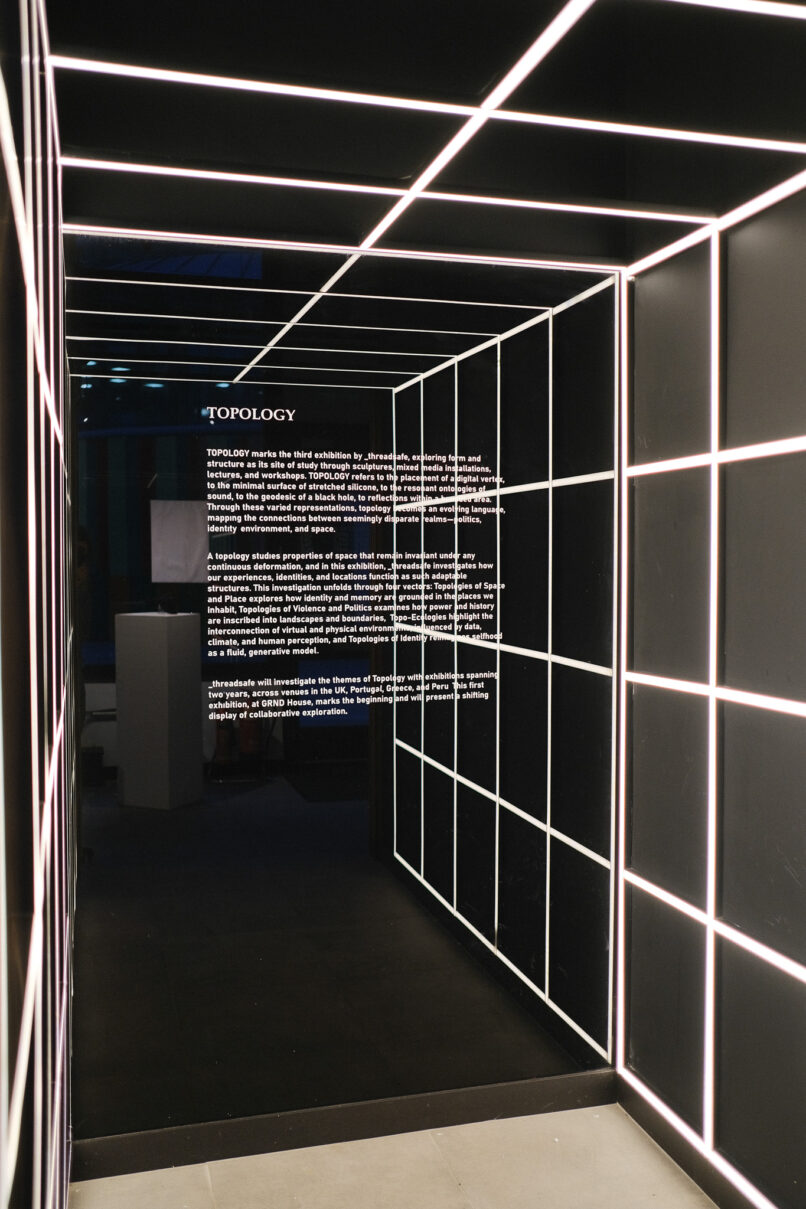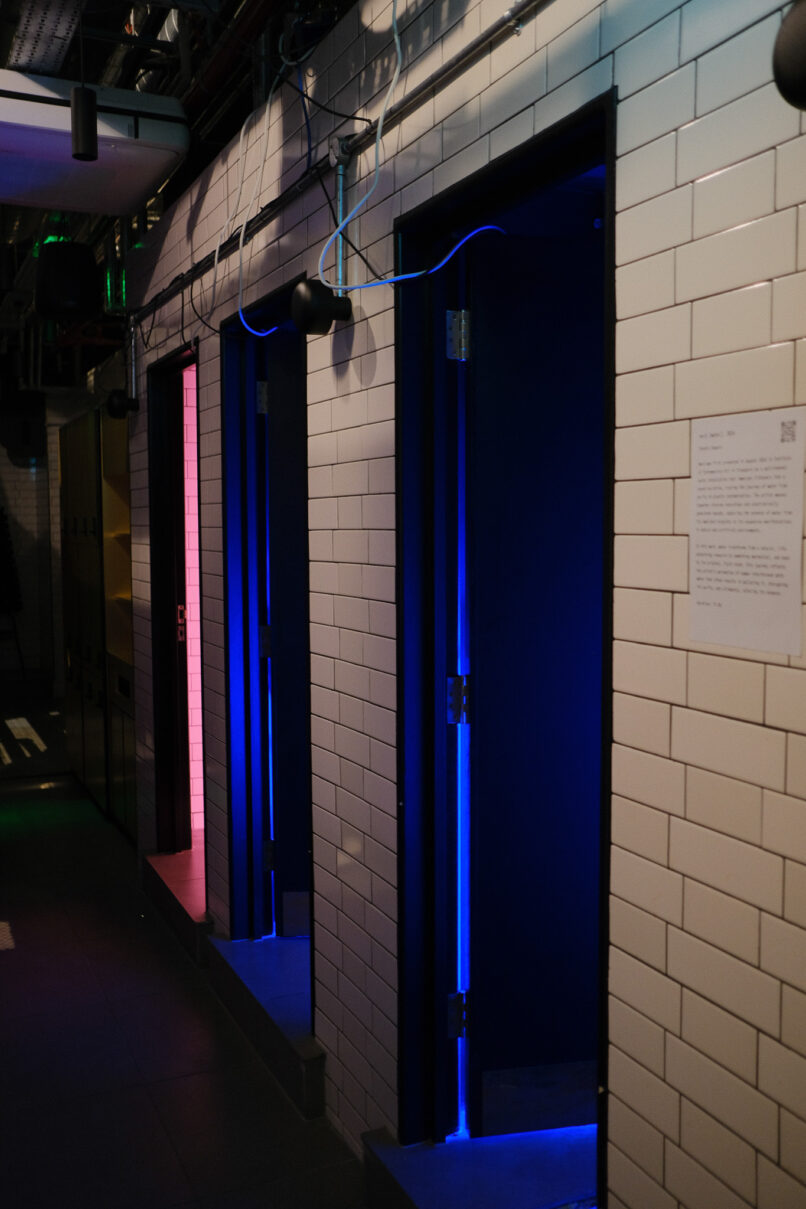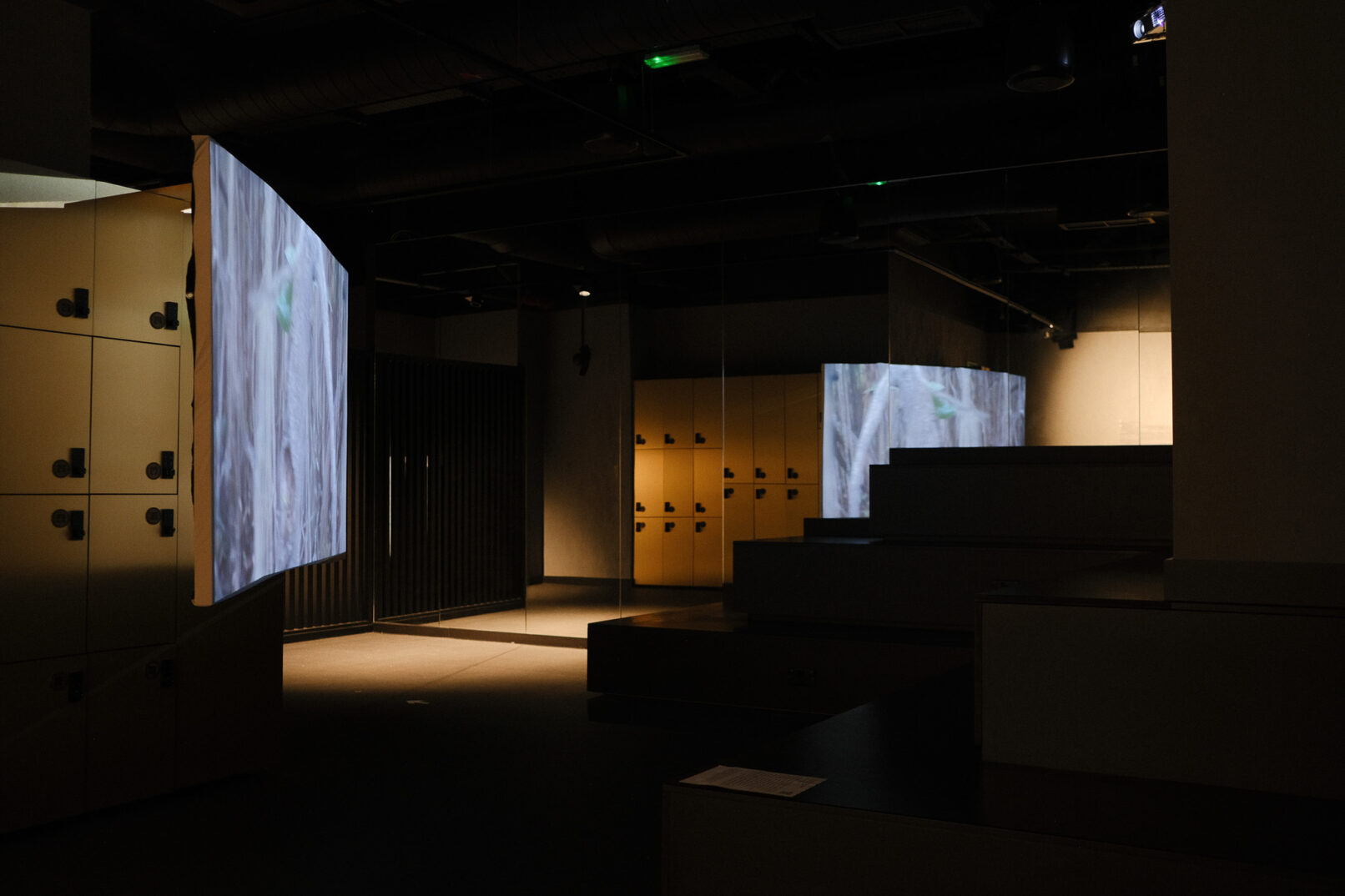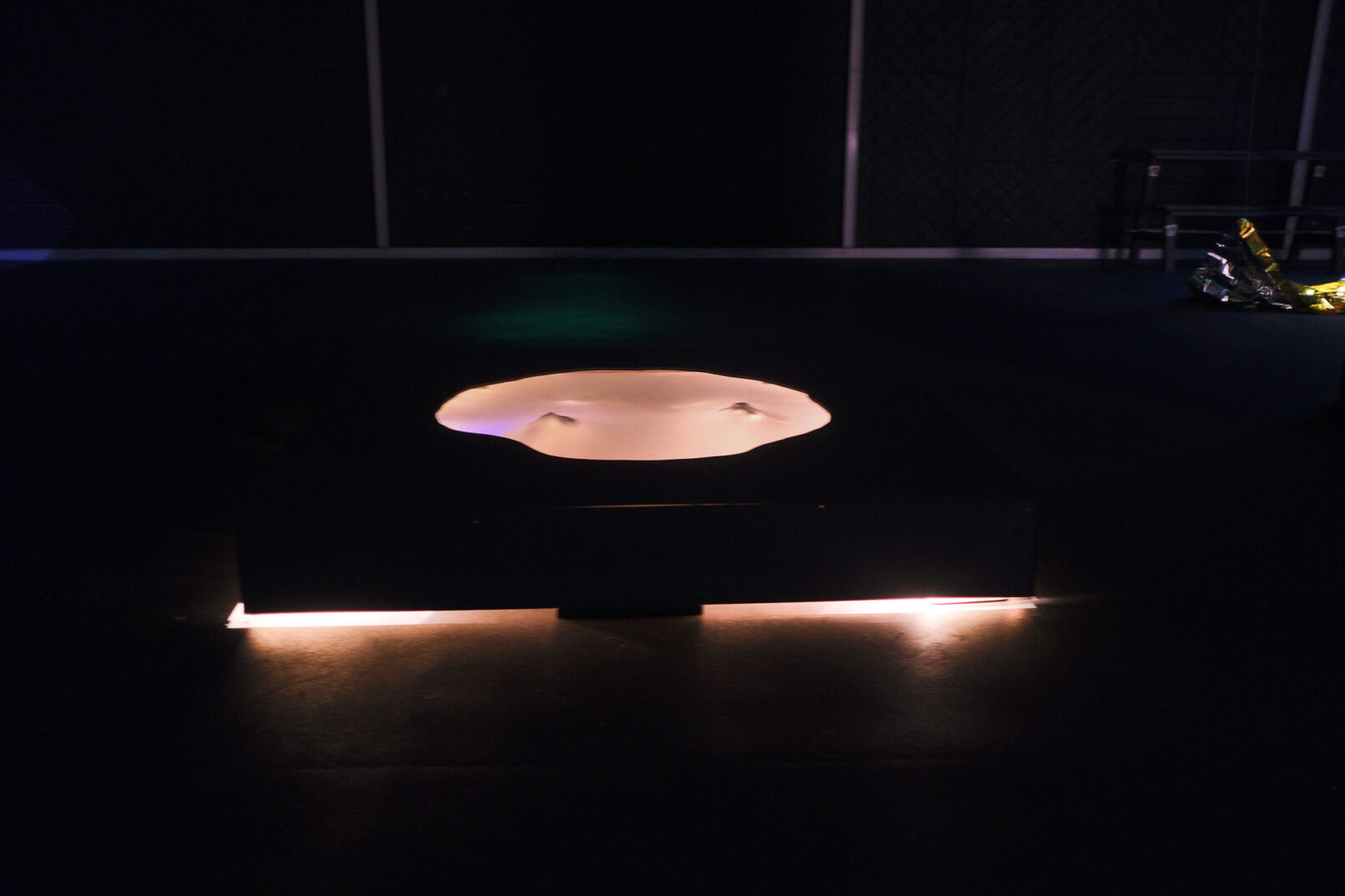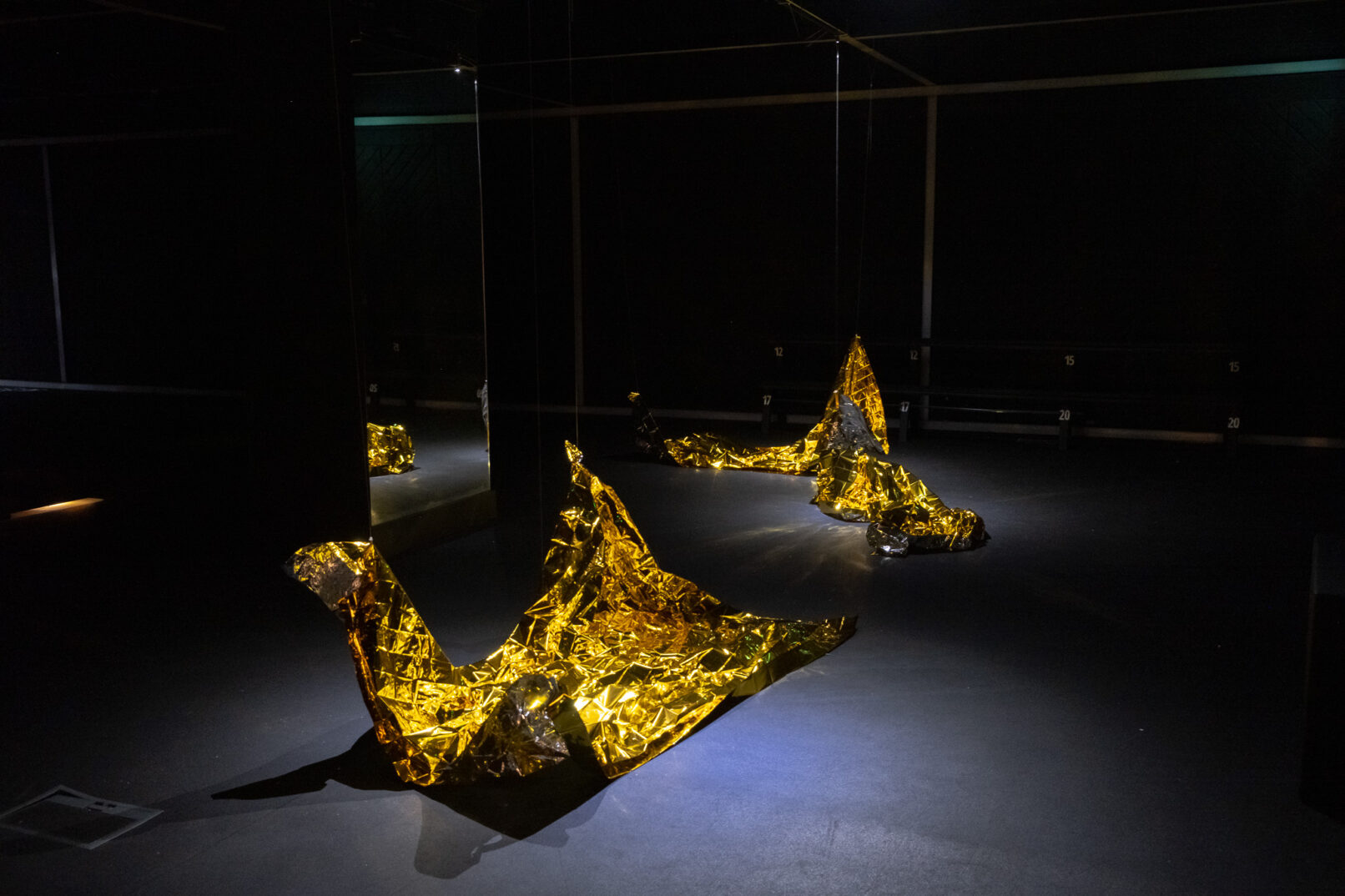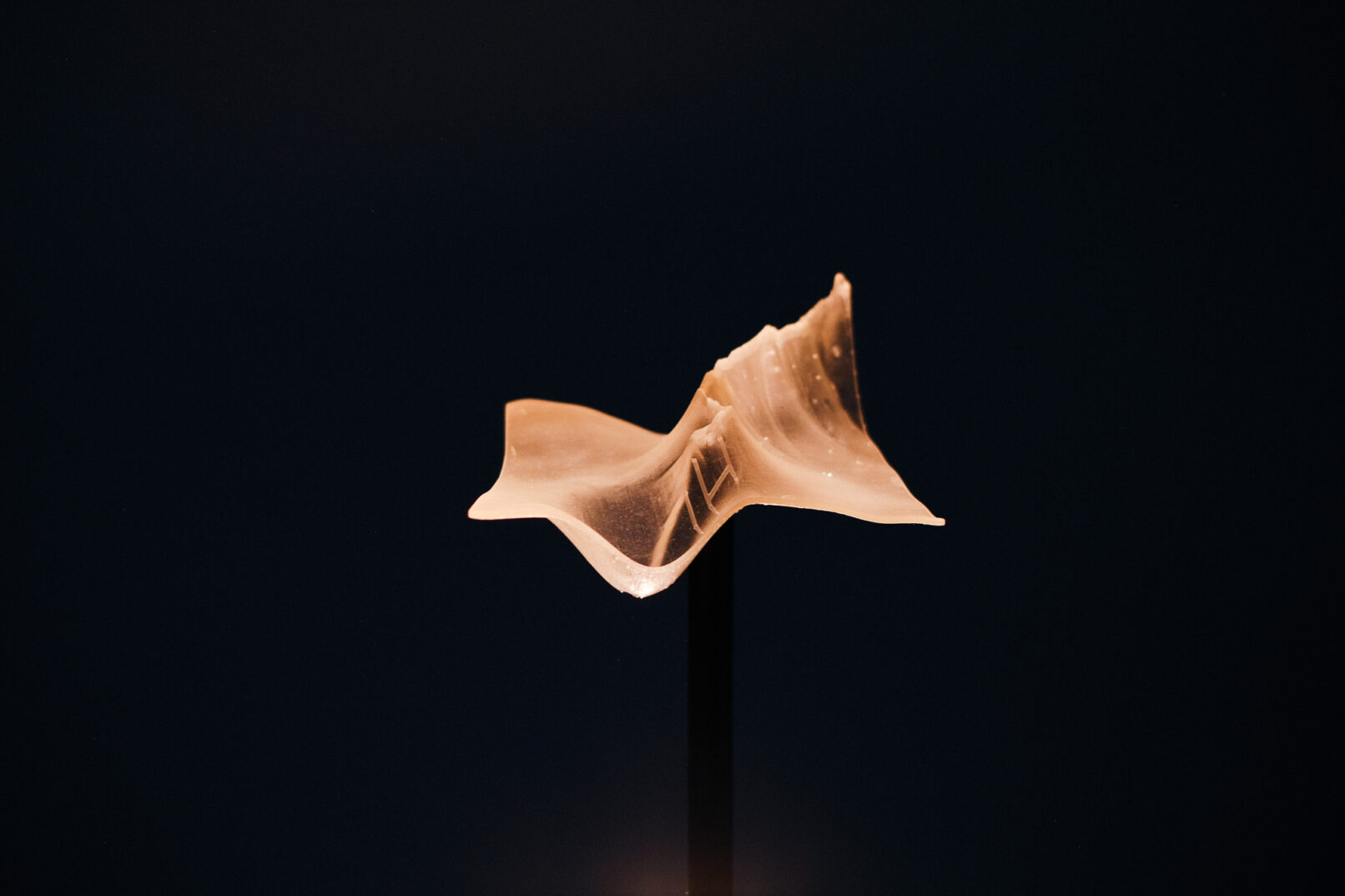Invariances through Continuous Deformation
21st November – 15 December 2024
TOPOLOGY marks the third exhibition by _threadsafe, exploring form and structure as its site of study through sculptures, mixed media installations, lectures, and workshops. TOPOLOGY refers to the placement of a digital vertex, to the minimal surface of stretched silicone, to the resonant ontologies of sound, to the geodesic of a black hole, to reflections within a bounded area. Through these varied representations, topology becomes an evolving language, mapping the connections between seemingly disparate realms—politics, identity, environment, and space.
A topology studies properties of space that are invariant under any continuous deformation, _threadsafe exposes our parallel experiences, identities, and locations as such deformations which when investigated through artworks allow commonalities to emerge.
_threadsafe will investigate the themes of Topology with exhibitions spanning two years, across venues in the UK, Portugal, Greece, and Peru. This first exhibition, at GRND House, marks the beginning and will present a shifting display of collaborative exploration.
Topologies of Space and Place
Topology defines not only the arrangement of space but the essence of place—it’s an embodied experience that defines human identity through location with purpose. We invite visitors to consider space not as abstract, but formative and personal – a tangible presence that shapes identity and experience. From ancient cartographies to modern philosophy, the ties between self and place transcend mere physical locations, grounding our reality and memory in the spaces we inhabit. Terra Poetica – an installation of interactive poetry and sound explores how physical and environmental spaces are linked through unseen but impactful connections.
Topologies of Politics and Violence
Spaces are rarely neutral; they carry the weight of histories and power structures. How does political power exist within geographic and social structures? Topologies of Politics interrogates how spaces become symbols of control and resistance – creating boundaries, exclusions, and identities. Topologies of Violence explores how certain locations become sites of control, conflict, and even erasure. Drawing from philosophical inquiries into place, we understand that borders and territories are more than lines, and ask how does place contribute to the acts of violence and resistance it witnesses. How do power structures map themselves onto landscapes? And how does space reveal the inner workings of political power, as it ‘takes place’ in both the literal and metaphorical sense.
Topo-Ecologies
Topology, traditionally understood as the study of spatial relations, finds new meaning in the context of ecology. Our environments are more than physical spaces—they are topological networks where data, climate, and human-impact intersect. This section explores two works that reimagine our ecological spaces: Well, No Well connects places through a digital simulation of Cycladic weather, bringing the reality of water scarcity into the gallery. In contrast, Los Geranios blurs the boundaries between the virtual and the real, transforming ecological landscapes into enduring digital entities. These works raise questions about our ecological footprint, not only on land but in the digital and conceptual realms that now shape our understanding of ‘place.’ As our relationships with Earth’s ecosystems become increasingly mediated by data, how do these connected ‘topo-ecologies’ alter our perceptions of loss, preservation, and resilience?”
Topologies of Identity
Identities are unfixed, ever-changing, and continuous geographies we use to express ourselves, and understand each other. They are an aspect of our ever-evolving selves, and once defined become immediately inadequate. How can the self move through differing, fluid conceptions? Can geometry and computation express identity as a generative, performative material, a product of being of the world more than a representation of impermeable, fixed boundaries? Zodiactopus (Study for Singularity) morphs through many self-identities at the boundary of a black hole, which serves as the attractor for those bodies to coalesce into the shape of the /octopus, momentary expressions becoming alien through their compression in a singularity.
Hypha Studios Paddington (Unit 3 Sheldon Square, London W2 6EY)
